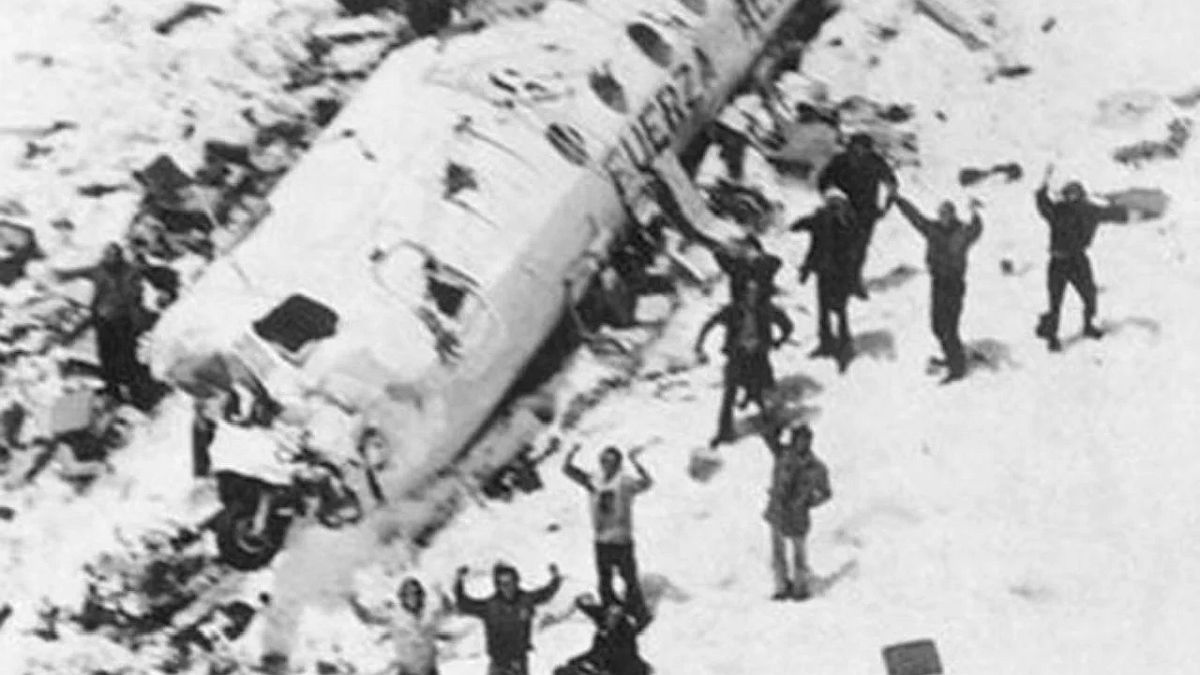Not long ago, a little-known Uruguayan writer, Fernando Parrado, published a book titled “Miracle in the Andes.”
Parrado, just 20 years old, was one of the survivors of an aviation accident that had enormous repercussions several decades ago.
But let’s get to the fact. On October 13, 1972, a plane chartered by a rugby club from Montevideo (Uruguay) tried to cross the Andes Mountains in the direction of Santiago, Chile, where they would play a friendly match of that sport.
A total of 45 people, including passengers and crew, took that flight.
In the middle of the journey, a violent storm destabilized the device, which finally ended up hitting the crest of a mountain.
The tail and wings came off. The plane split in two and many of the passengers were dragged into the void.
Due to the force of the impulse, the belly of the device fell in such a way that when it hit the ground it continued sliding at full speed along a huge glacier, until a mound stopped it suddenly.
Thirteen people died in the crash and many were injured.
Nando Parrado, the writer I alluded to, was one of them.
A head injury left him in a coma for three days.
He would have died too, if two of his friends had not covered him at night with their own bodies.
When he reacted, he learned that his mother, who was traveling on that plane, had also died.
One of his sisters was badly injured and died a few days later in his arms.
The hope of rescue gave the survivors strength to endure hunger and resist the icy blizzards that hit the remains of the fuselage, now converted into shelter.
But when they had been waiting for 10 long days to hear the noise of the rescue helicopters, they heard on a radio that the search had been suspended. They had been left for dead.
At temperatures of ten degrees below zero, without food and in summer clothes, death decimated them: some from wounds, others from the cold.
16 of the passengers were finally able to last 72 days and nights.
Convinced that no one would come to rescue them, two of them, Parrado, the author of the book I mentioned, and Roberto Canesa, both with a sleeping bag made from pieces of plane insulation, made a heroic decision. Because “necessity does not grant strength. But he discovers them.”
They were not unaware that a slight mistake would be fatal to them. They decided with great courage to walk towards Chile, through an area that seemed relatively accessible to them.
They took as their only food frozen meat of which originit would not be in good taste to clarify.
I would only like to refer to the feat of the two brave men.
14 companions were left waiting for them, using the remains of the plane as very precarious accommodation.
Drawing strength from weakness, Parrado and Canesa walked for 10 days, until fortunately they found a Chilean peasant, a baqueano.
The rest is guessed. Already in a helicopter, which both accompanied in the search, the remaining companions were located and thus providentially saved their lives.
This episode was a complete demonstration of faith. I am referring especially to the action of the two heroes, who undertook, weakened and battered, a march that could well have been towards death.
Although happily it wasn’t. They ultimately demonstrated that you can live without reality, but not without hope.
There are numerous cases in the history of the world in which many achievements were obtained by practically defeated men, like them. Men who, by traveling towards the stars, undoubtedly stumbled, but the stars themselves helped them not to fall.
And a final aphorism
“We are not the architects of being born or of dying, but we can be the architects of living.”
Source: Ambito
David William is a talented author who has made a name for himself in the world of writing. He is a professional author who writes on a wide range of topics, from general interest to opinion news. David is currently working as a writer at 24 hours worlds where he brings his unique perspective and in-depth research to his articles, making them both informative and engaging.




